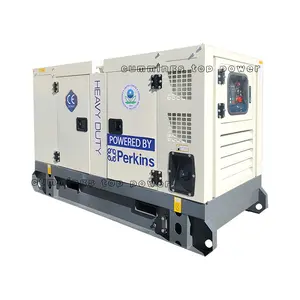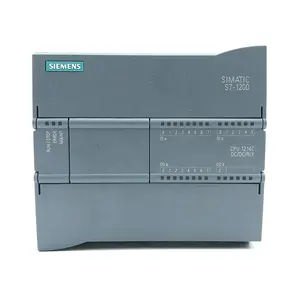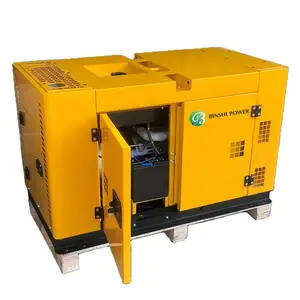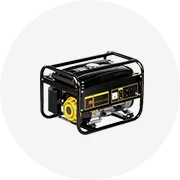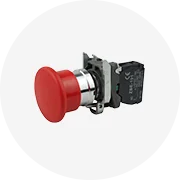Phổ biến trong ngành của bạn

Giảm Giá Giá thương hiệu lớn HMI màn hình cảm ứng Bảng điều chỉnh PLC/HMI tất cả-trong-một điều khiển công nghiệp con người Ethernet giao diện máy
29,77 US$ - 37,70 US$
Đơn hàng tối thiểu: 1 Hộp


Mới 100% gốc siemens plc 6av21241mc010ax0 12 "màn hình cảm ứng hmi kp1200 6av2124-1mc01-0ax0
1.750,00 US$ - 1.900,00 US$
Đơn hàng tối thiểu: 1 Cái


Thích ứng với tất cả các thương hiệu HMI Touch Panel tất cả-trong-một điều khiển công nghiệp HMI giảm giá giá Ethernet giao diện máy con người máy
29,77 US$ - 37,70 US$
Đơn hàng tối thiểu: 1 Hộp


Mới ban đầu Siemens PLC 6av21232gb030ax0 7 "Màn hình cảm ứng HMI ktp700 cơ bản 6av2123-2gb03-0ax0
300,00 US$ - 350,00 US$
Đơn hàng tối thiểu: 1 Cái


HMI cảm ứng bảng điều chỉnh màn hình 7 10 12 15 inch 6av2128-3gb06-0ax1 6av2128-3kb06-0ax1 6av2128-3mb06-0ax1
10,00 US$ - 100,00 US$
Đơn hàng tối thiểu: 5 Cái


Bộ Điều Khiển Tự Động Bảng Điều Khiển HMI Plc
Sẵn sàng vận chuyển
335,00 US$ - 350,00 US$
Đơn hàng tối thiểu: 1 Cái
Vận chuyển mỗi chiếc: 47,00 US$

Bộ Điều Khiển Logic Phần Mềm Lập Trình Delta CNC PLC Và HMI Hiệu Suất Cao DVP12SA11R Với Giá Tốt
200,00 US$ - 300,00 US$
Đơn hàng tối thiểu: 1 Cái

Bán Sỉ Màn Hình Cảm Ứng Hmi 10 Inch Hiệu Suất Cao Bộ Điều Khiển Màn Hình Công Nghiệp Bộ Điều Khiển Tất Cả Trong Một Với Hmi
27,77 US$ - 40,99 US$
Đơn hàng tối thiểu: 1 Bộ

NB7W-TW00B Điều Khiển Hmi Lcd Plc Bảng Điều Khiển Màn Hình Cảm Ứng 7 Inch
200,00 US$ - 250,00 US$
Đơn hàng tối thiểu: 1 Cái

Huaqingjun Đầu Ra Rơle 16 Trong 16 Đầu Ra PLC Đầu Vào Và Đầu Ra Tương Tự 2 Kênh 0-20mA Với Bộ Điều Khiển PLC RS485 Cho HMI
Sẵn sàng vận chuyển
72,00 US$ - 75,00 US$
Đơn hàng tối thiểu: 5 Cái
Vận chuyển mỗi chiếc: 3,12 US$

Delixi Bộ Điều Khiển Cảm Ứng HMI Bảng Điều Khiển Màn Hình Cảm Ứng 5 Inch Mitsubishi Proface Plc HMI
39,00 US$ - 79,00 US$
Đơn hàng tối thiểu: 1 Bộ

Bộ Điều Khiển Tự Động Hóa Plc Hmi Tất Cả Trong Một Với Hmi
59,00 US$ - 269,00 US$
Đơn hàng tối thiểu: 1 Cái

Hàng Có Sẵn Bảng Điều Khiển Đồ Họa Nguyên Bản GS2110-WTBD Hmi 7Inch Màn Hình Cảm Ứng Điều Khiển Plc Với Hmi
60,00 US$ - 165,00 US$
Đơn hàng tối thiểu: 5 Cái

Màn Hình Cảm Ứng Kinco 7 Inch Chính Hãng Mới Bao Gồm HP070-33DT Điều Khiển, MK070E-33DT Màn Hình Cảm Ứng HMI Giao Diện Máy Người
Sẵn sàng vận chuyển
95,00 US$ - 130,00 US$
Đơn hàng tối thiểu: 1 Đơn vị
Vận chuyển mỗi chiếc: 16,60 US$

Kinco gl070e Ethernet HMI màn hình cảm ứng 7 inch giao diện người máy CNC HMI PLC điều khiển
100,00 US$
Đơn hàng tối thiểu: 5 Cái
Vận chuyển mỗi chiếc: 20,11 US$

6AV6640-0CA11-0AX1 TP177 Micro PLC HMI điều khiển với tích hợp cảm ứng groupe Panel Màn hình HMI
100,00 US$ - 200,00 US$
Đơn hàng tối thiểu: 1 Cái

Hmigxu3500 HMI Màn hình hiển thị điều khiển cảm ứng New Original PLC mô-đun kho trong kho
Sẵn sàng vận chuyển
94,60 US$
Đơn hàng tối thiểu: 1 Cái
Vận chuyển mỗi chiếc: 34,24 US$

Resotec | j17-13815 | Bộ điều khiển HMI-Để sử dụng trong tự động hóa công nghiệp/CNC và các chức năng công nghiệp khác nhau
500,00 US$ - 2.500,00 US$
Đơn hàng tối thiểu: 6 Đơn vị

Siemens 6av2124-0mc01-0ax0 PLC HMI điều khiển với logo bảo hành
1.200,00 US$ - 1.216,00 US$
Đơn hàng tối thiểu: 1 Cái
Vận chuyển mỗi chiếc: 32,36 US$

Delixi Bộ Điều Khiển Cảm Ứng HMI Bảng Điều Khiển Màn Hình Cảm Ứng 5 Inch Mitsubishi Proface Plc HMI
215,00 US$
Đơn hàng tối thiểu: 5 Cái

Simatic HMI điều khiển/Touch Panel Siemen S A5E00120261-02 6av6545-0ba1
66,00 US$
Đơn hàng tối thiểu: 1 Cái


TP04P-21EX1R trong kho 100% New Original HMI 4-dòng văn bản Bảng điều chỉnh PLC điều khiển tp04p21ex1r
8,00 US$ - 30,00 US$
Đơn hàng tối thiểu: 1 Cái

Bộ Điều Khiển HMI Techmation TECH2 + 8 Inch, TECH2 Q8 Techmation PLC
635,00 US$
Đơn hàng tối thiểu: 1 Bộ

Chất lượng cao lập trình Bộ điều khiển con người máy giao diện 6av66410ba110ax1 HMI mô-đun điều khiển 6AV6641-0BA11-0AX1 007
995,00 US$ - 1.000,00 US$
Đơn hàng tối thiểu: 1 Cái

Nhà Máy Gốc Giá Tốt Plc Hmi Điều Khiển HMIDT551
10,00 US$ - 15,00 US$
Đơn hàng tối thiểu: 1 Cái
Vận chuyển mỗi chiếc: 22,56 US$

Trung Quốc bán buôn 7 10 inch hiển thị cảm ứng công nghiệp HMI màn hình cảm ứng HMI màn hình cảm ứng PLC HMI điều khiển
70,00 US$ - 125,00 US$
Đơn hàng tối thiểu: 1 Cái

Siemens SIMATIC HMI lập trình điều khiển TP1500 thoải mái Bảng điều chỉnh Màn hình rộng TFT hiển thị 6av21240gc010ax0
299,00 US$ - 799,00 US$
Đơn hàng tối thiểu: 5 Cái

Mới và độc đáo Bảng điều khiển thông minh HMI màn hình cảm ứng lập trình điều khiển 6av6642-0ba01-1ax1
30,00 US$ - 80,00 US$
Đơn hàng tối thiểu: 5 Cái

Bộ điều khiển màn hình cảm ứng 6av2123-2jb03-0ax0 ktp900 HMI mới
774,00 US$ - 801,90 US$
Đơn hàng tối thiểu: 1 Cái

6AV6640-0CA11-0AX1 Bộ Điều Khiển Hmi PLC Micro TP177 Với Màn Hình Cảm Ứng Tích Hợp Hmi
300,00 US$ - 450,00 US$
Đơn hàng tối thiểu: 1 Cái

Mt8072ip mới và độc đáo chúng tôi-trong xem HMI màn hình cảm ứng PLC điều khiển 7 inch colour thương hiệu công nghiệp màn hình cảm ứng mt8072ip
89,00 US$ - 149,00 US$
Đơn hàng tối thiểu: 5 Cái

Rievtech PR-24DC-DA-R Sms PLC Điều Khiển Logic Lập Trình Bộ Điều Khiển Thông Minh Tự Động Hóa Giá Plc Điều Khiển Hmi
198,00 US$
Đơn hàng tối thiểu: 1 Cái

10 inch công nghiệp PoE Tablet nhúng PLC HMI điều khiển
Sẵn sàng vận chuyển
99,00 US$ - 149,00 US$
Đơn hàng tối thiểu: 1 Cái
Vận chuyển mỗi chiếc: 39,00 US$

Coolmay QM3G-series 24MT Thương Hiệu Bộ Điều Khiển Hmi 24VDC Hmi Fx3u 14mr Io Hmi Cho Công Nghiệp
90,00 US$ - 170,00 US$
Đơn hàng tối thiểu: 1 Cái

Bộ Điều Khiển Lập Trình PLC Jetter JX2-SV1 Plc Analog Module Điều Khiển Hmi Plc
250,00 US$ - 500,00 US$
Đơn hàng tối thiểu: 1 Đơn vị

Gốc Siemens 12 "HMI 6av2123-2mb03-0ax0 ktp1200 cảm ứng bảng điều chỉnh màn hình cảm ứng PLC điều khiển lập trình điều khiển
99,00 US$ - 399,00 US$
Đơn hàng tối thiểu: 1 Thùng

Siemens 6AV6640-0CA11-0AX1 Bộ Điều Khiển Hmi Micro PLC TP177 Với Màn Hình Cảm Ứng Tích Hợp Hmi
300,00 US$ - 450,00 US$
Đơn hàng tối thiểu: 1 Cái
Các danh mục hàng đầu
Giới thiệu về bộ điều khiển hmi
Alibaba.com cung cấp các sản phẩm 50059 bộ điều khiển hmi. Có rất nhiều bộ điều khiển hmi lựa chọn dành cho bạn, chẳng hạn như công nghiệp, tự động, và tự động hóa công nghiệp. Bạn cũng có thể chọn từ thép, nhựa bộ điều khiển hmi. Cũng như từ đen, trắng, và màu xám bộ điều khiển hmi.

